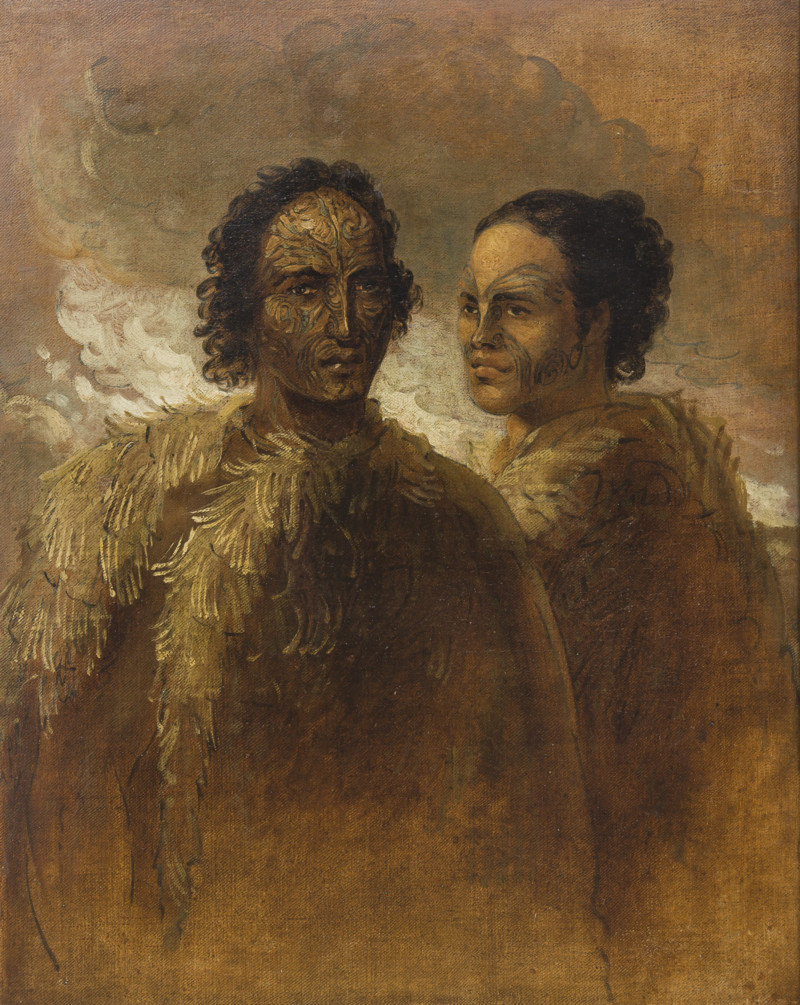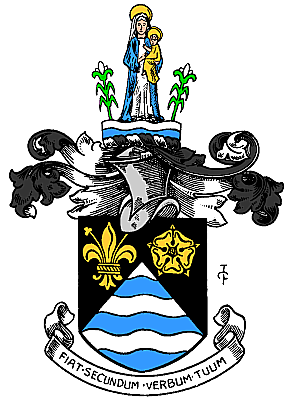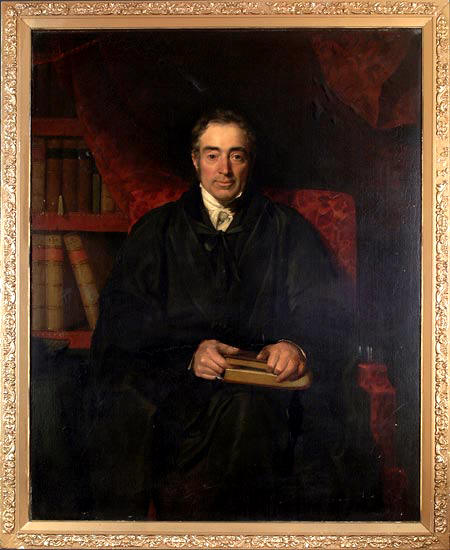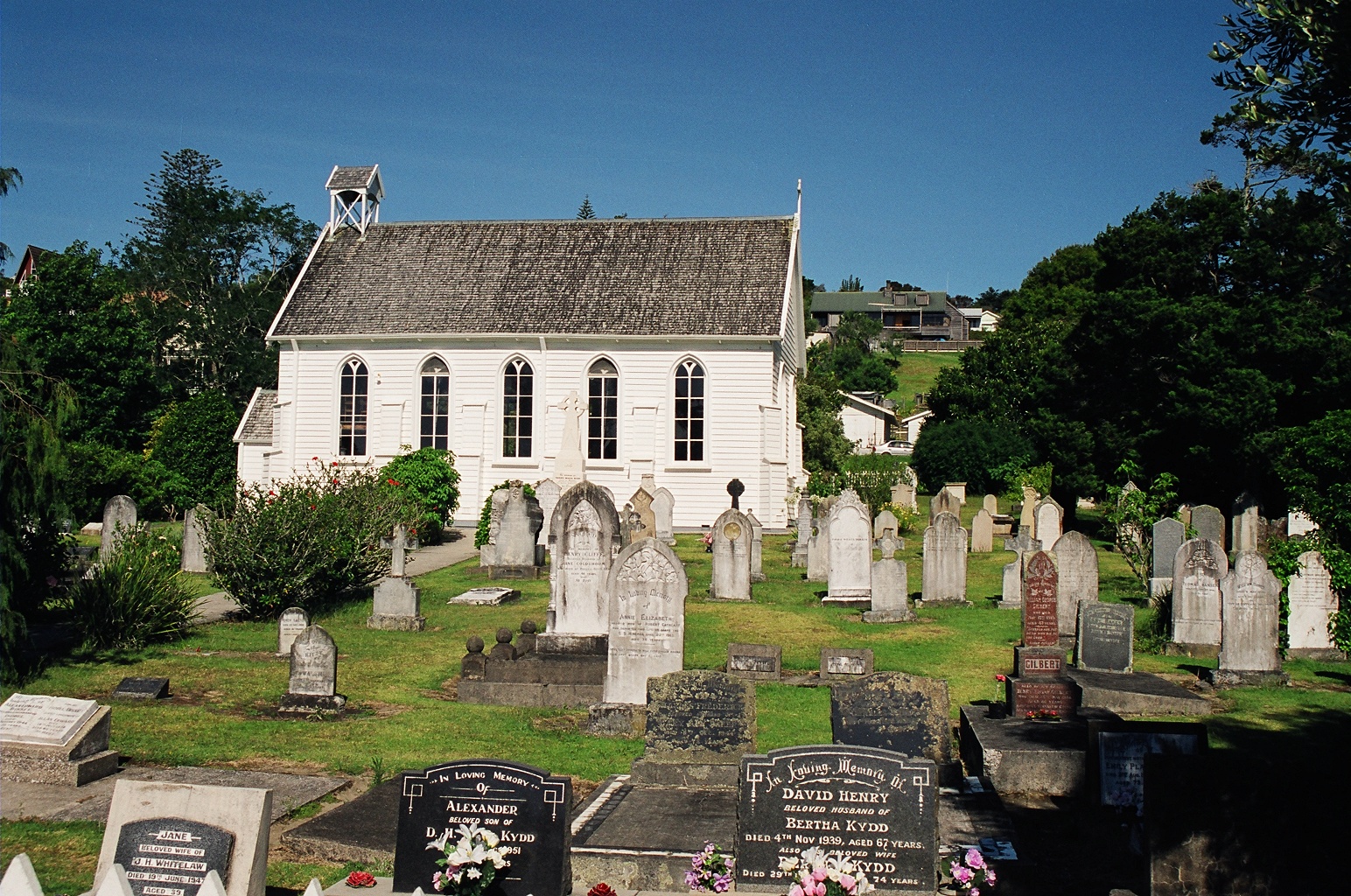|
Thomas Kendall
Thomas Kendall (13 December 1778 – 6 August 1832) was a schoolmaster, an early missionary to Māori people in New Zealand, and a recorder of the Māori language. An evangelical Anglican, he and his family were in the first group of missionaries to New Zealand, accompanied to the Bay of Islands by Samuel Marsden in December 1814 and settling there. He wrote the first book in Māori, published in 1815. By 1821 he felt it necessary to accede to local Māori demands for guns in order to ensure their continued protection of the mission, and the Church Missionary Society dismissed him in 1822 for gun dealing. Marsden visited New Zealand to dismiss him in person in 1823, after learning that he had committed adultery with a Māori woman. Kendall left New Zealand in 1825 and died in a ship sinking in Australia in 1832. Early life: Lincolnshire and London, 1778–1813 A younger son of farmer Edward Kendall and Susanna Surflit, Thomas Kendall was born in 1778. He grew up in North Thor ... [...More Info...] [...Related Items...] OR: [Wikipedia] [Google] [Baidu] |
Waikato (rangatira)
Waikato ( 1790 – 17 September 1877), sometimes known as Waikato Piriniha or Prince Waikato, also known as Hohaia Parata or Hohaia Parati, was a tribal leader (rangatira) of the Ngāpuhi and Te Hikutū iwi (tribes). Waikato's primary residence was the pā at Rangihoua Bay. As a young man, Waikato travelled to England in 1820 alongside the principal Ngāpuhi chief Hongi Hika and the missionary Thomas Kendall. Hongi Hika and Waikato had assisted Kendall with developing a written form of the Māori language and in England, they worked with the linguist Samuel Lee (linguist), Samuel Lee at the University of Cambridge in the preparation of a grammar and vocabulary of the language. The chiefs had an audience with King George IV. References {{DEFAULTSORT:Waikato 1790s births 1877 deaths 19th-century Māori tribal leaders Ngāpuhi people ... [...More Info...] [...Related Items...] OR: [Wikipedia] [Google] [Baidu] |
Marylebone
Marylebone (usually , also ) is an area in London, England, and is located in the City of Westminster. It is in Central London and part of the West End. Oxford Street forms its southern boundary. An ancient parish and latterly a metropolitan borough, it merged with the boroughs of Westminster and Paddington to form the new City of Westminster in 1965. Marylebone station lies two miles north-west of Charing Cross. The area is also served by numerous tube stations: Baker Street, Bond Street, Edgware Road (Bakerloo line), Edgware Road (Circle, District and Hammersmith & City lines), Great Portland Street, Marble Arch, Marylebone, Oxford Circus, and Regent's Park. History Marylebone was an Ancient Parish formed to serve the manors (landholdings) of Lileston (in the west, which gives its name to modern Lisson Grove) and Tyburn in the east. The parish is likely to have been in place since at least the twelfth century and will have used the boundaries of the pre- ... [...More Info...] [...Related Items...] OR: [Wikipedia] [Google] [Baidu] |
Samuel Lee (linguist)
Samuel Lee (14 May 1783 – 16 December 1852) was an English Orientalist, born in Shropshire; professor at Cambridge, first of Arabic and then of Hebrew language; was the author of a Hebrew grammar and lexicon, and a translation of the ''Book of Job''. Biography Born of poor parents at Longnor, a Shropshire village 8 miles from Shrewsbury, Samuel Lee received a charity school education and at age twelve became a carpenter's apprentice in Shrewsbury. He was fond of reading and acquired knowledge of a number of languages. An early marriage caused him to reduce the time devoted to his studies, but the accidental loss of his tools caused him to become a school teacher, giving private lessons in Persian and Hindustani. His remarkable linguistic abilities eventually brought him to the notice of the Church Missionary Society, which paid for his education at Cambridge University. He entered Queens' College, Cambridge, in 1813. He graduated B.A. in 1818, and proceeded M.A. in 1819, B ... [...More Info...] [...Related Items...] OR: [Wikipedia] [Google] [Baidu] |
A Korao No New Zealand
''A korao no New Zealand; or, the New Zealander's first book'' was written by Anglican missionary Thomas Kendall in 1815, and is the first book written in the Māori language. The full title is ''A korao no New Zealand, or, The New Zealander's first book : being an attempt to compose some lessons for the instruction of the natives''. The word ''korao'' would today be written ''kōrero''. ''A Korao'' was written as an aid to educate Māori children and convert them to Christianity. It features phrases, word lists and religious instruction. The children would recite the alphabet and syllables, in hopes of learning reading and writing. '' Te Ara: The Encyclopedia of New Zealand'' describes the book as "very basic and full of errors". 200 copies were printed in Sydney by missionary Samuel Marsden in 1815. The only known extant copy is held by Auckland War Memorial Museum. In 2014, the book was added to the UNESCO The United Nations Educational, Scientific and Cultural Organ ... [...More Info...] [...Related Items...] OR: [Wikipedia] [Google] [Baidu] |
Rangihoua Bay
Rangihoua Bay is a bay at the southern end of the Purerua Peninsula, on the north-west shore of the Bay of Islands in Northland Region, Northland, New Zealand.Wises New Zealand Guide, 7th Edition, 1979. p.367. It is 10 km north across the Bay of Islands from Russell, New Zealand, Russell and 12 km north from Paihia. By road it is 32 km from Kerikeri. History In the early 19th century, when European ships first began visiting the area, the Ngāpuhi chief Te Pahi had a Pā (Māori), pā at Rangihoua. After his death in 1810 he was succeeded as chief by Ruatara (chief), Ruatara. It was the friendship of Te Pahi and Ruatara with Samuel Marsden that led Marsden to decide that Rangihoua would be the site of the first Christian mission in New Zealand. Prior to the establishment of the mission Ruatara had been the first to grow wheat in New Zealand, at Rangihoua in 1812. The missionaries, John King, Thomas Kendall, and William Hall, together with free settler Thomas Hanse ... [...More Info...] [...Related Items...] OR: [Wikipedia] [Google] [Baidu] |
Early New Zealand Books
Early New Zealand Books (ENZB) is a project from the library of the University of Auckland, New Zealand, launched in 2005, that aims at providing keyword-searchable text of significant books published about New Zealand in the first two-thirds of the nineteenth century. It also includes the subsequently published memoirs, journals and correspondence of people active in this era. The project has been funded and managed by the University of Auckland Library and has been freely available on the internet; as of 2024, the database is temporarily only accessible by staff and students of the university. Each page is linked to an image of that page from the original book. This provides researchers with assurance of accuracy. There are special searches for captions to illustrations and chapter summaries as well as a general full-text search across the whole corpus. The images are available at original size and extra-large. Books are also available as downloadable ePub ebooks. It is one o ... [...More Info...] [...Related Items...] OR: [Wikipedia] [Google] [Baidu] |
Lachlan Macquarie
Major-general (United Kingdom), Major General Lachlan Macquarie, Companion of the Order of the Bath, CB (; ; 31 January 1762 – 1 July 1824) was a British Army officer and colonial administrator from Scotland. Macquarie served as the fifth Governor of New South Wales from 1810 to 1821, and had a leading role in the social, economic, and architectural development of the colony. He is considered by historians to have had a crucial influence on the transition of New South Wales from a penal colony to a free settlement and therefore to have played a major role in the shaping of Australian society in the early nineteenth century. Macquarie played a central role in urban planning in the colony. He had a significant impact on the development of modern Sydney, establishing the layout upon which the modern Sydney central business district, city centre is based, establishing Hyde Park, Sydney, Hyde Park as Australia's first public park, overseeing the construction of various public buildi ... [...More Info...] [...Related Items...] OR: [Wikipedia] [Google] [Baidu] |
Musket
A musket is a muzzle-loaded long gun that appeared as a smoothbore weapon in the early 16th century, at first as a heavier variant of the arquebus, capable of penetrating plate armour. By the mid-16th century, this type of musket gradually disappeared as the use of heavy armour declined, but ''musket'' continued as the generic term for smoothbore long guns until the mid-19th century. In turn, this style of musket was retired in the 19th century when rifled muskets (simply called rifles in modern terminology) using the Minié ball (invented by Claude-Étienne Minié in 1849) became common. The development of breech-loading firearms using self-contained Cartridge (firearms), cartridges, introduced by Casimir Lefaucheux in 1835, began to make muskets obsolete. The first reliable repeating rifles, the 1860 Henry rifle and its 1866 descendent the Winchester rifle, superseded muskets entirely. Repeating rifles quickly established themselves as the standard for rifle design, ending the ... [...More Info...] [...Related Items...] OR: [Wikipedia] [Google] [Baidu] |
Ngāpuhi
Ngāpuhi (also known as Ngāpuhi-Nui-Tonu or Ngā Puhi) is a Māori iwi associated with the Northland regions of New Zealand centred in the Hokianga, the Bay of Islands, and Whangārei. According to the 2023 New Zealand census, the estimated population of Ngāpuhi is 184,470. This compares to 125,601 in 2001, 102,981 in 2006, 122,214 in 2013. and 165,201 in 2018. It is formed from 150 hapū or subtribes, with 55 marae. Despite such diversity, the people of Ngāpuhi maintain their shared history and self-identity. Te Rūnanga ā Iwi o Ngāpuhi, based in Kaikohe, administers the iwi. The Rūnanga acts on behalf of the iwi in consultations with the New Zealand government. It also ensures the equitable distribution of benefits from the 1992 fisheries settlement with the government, and undertakes resource management and education initiatives. History Origins of Ngāpuhi Ngāpuhi, like most iwi, trace their pre-history back to the land of Hawaiki, most likely from Raiatea. ... [...More Info...] [...Related Items...] OR: [Wikipedia] [Google] [Baidu] |
Ruatara (chief)
Ruatara ( – 3 March 1815) was chief of the New Zealand Māori tribe Ngāpuhi. He introduced European crops to New Zealand and was host to the first Christian missionary, Samuel Marsden. Ruatara's pā was at Rangihoua on the northern shore of the Bay of Islands. Early life Ruatara's father was Te Aweawe of the Ngati Rahiri and Ngati Tautahi subtribes (hapū) of the nation Ngāpuhi, and his mother Tauramoko, of Ngāti Rahiri and Ngāti Hineira hapū. Marsden thought Ruatara's father was Kaparu, the younger brother of Te Pahi, and that his mother was a sister of Hongi Hika but this is likely not the case. Ruatara's second wife was Rahu, whose sister married Waikato, a chief of the Te Hikutu hapu within the Ngāpuhi iwi. The Te Hikutu people moved to Rangihoua after Ruatara married Rahu. Australia In 1805, he first attempted to travel abroad, and signed up as a sailor on a whaling ship, the ''Argo'', but was cheated and stranded in Sydney the following year by its captain ... [...More Info...] [...Related Items...] OR: [Wikipedia] [Google] [Baidu] |
Rangatira
In Māori culture, () are tribal chiefs, the leaders (often hereditary) of a (subtribe or clan). Ideally, were people of great practical wisdom who held authority () on behalf of the tribe and maintained boundaries between a tribe's land () and that of other tribes. Changes to land-ownership laws in the 19th century, particularly the individualisation of land title, undermined the power of rangatira, as did the widespread loss of land under the Euro-settler-oriented government of the Colony of New Zealand from 1841 onwards. The concepts of and (chieftainship), however, remain strong, and a return to and the uplifting of Māori by the system has been widely advocated for since the Māori renaissance began . Moana Jackson, Ranginui Walker and Tipene O'Regan figure among the most notable of these advocates. The concept of a is central to —a Māori system of governance, self-determination and sovereignty. Etymology The word means "chief (male or female), wellbor ... [...More Info...] [...Related Items...] OR: [Wikipedia] [Google] [Baidu] |
Russell, New Zealand
Russell () is a town in the Bay of Islands, in New Zealand's far north. It was the first permanent European settlement and seaport in New Zealand. History Māori settlement Before the arrival of the Europeans, the area now known as Russell was inhabited by Māori people, Māori because of its pleasant climate and the abundance of food, fish and fertile soil. The settlement was known as Kororāreka, and was located on the coast. The name translates to 'sweet Little penguin, blue penguin', after an ailing chief who had eaten a penguin broth remarked or 'the kororā is sweet'.McCloy, Nicola (2006). ''Whykickamoocow – curious New Zealand place names''., Random House New Zealand. Early European explorers James Cook and Marc-Joseph Marion du Fresne remarked, by their arrival in the 18th century, that the area was quite prosperous. Early European settlement When European and American ships began visiting New Zealand in the early 1800s, the indigenous Māori quickly recog ... [...More Info...] [...Related Items...] OR: [Wikipedia] [Google] [Baidu] |






